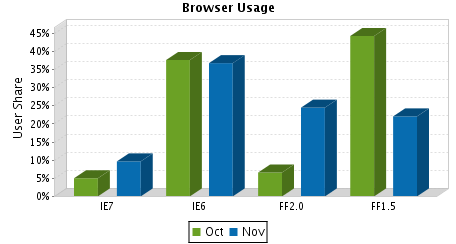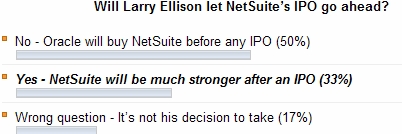
 SAP held major internal announcements and demos of its A1S product, tailored for the mid-market, the future growth sector now that the top end of the ERP market is saturated.
SAP held major internal announcements and demos of its A1S product, tailored for the mid-market, the future growth sector now that the top end of the ERP market is saturated.
The demos were top-secret, attendees had to sign an NDA – and since I am not one of them, I’m left wondering whether they’ve seen the original flavor or the Zesty one 

 24SevenOffice
24SevenOffice
 (Updated)
(Updated)
 ). Clearly, the majority of new IE7 users are not IE6 upgraders, they came from the Firefox camp.
). Clearly, the majority of new IE7 users are not IE6 upgraders, they came from the Firefox camp.





Recent Comments